The central question that unavoidably dominates today’s thinking and speaking about the Russian avant-garde is the question regarding the relationship between artistic revolution and political revolution. Was the Russian avant-garde a collaborator, a coproducer of the October Revolution? And if the answer is yes, can the Russian avant-garde function as an inspiration and model for contemporary art practices that try to transgress the borders of the art world, to become political, to change the dominant political and economical conditions of human existence, to put themselves in the service of political or social revolution, or at least of political and social change?
Today, the political role of art is mostly seen as being twofold: (1) critique of the dominant political, economic, and art system, and (2) mobilization of the audience toward changing this system through a Utopian promise. Now, if we look at the first, pre-revolutionary wave of the Russian avant-garde, we do not find any of these aspects in its artistic practice. To criticize something one must somehow reproduce it—to present this criticized something together with the critique of it.
But the Russian avant-garde wanted to be non-mimetic. One can say that Malevich’s Suprematist art was revolutionary, but one can hardly say that it was critical. The sound poetry of Alexei Kruchenykh was also non-mimetic and non-critical. Both of these artistic practices—the most radical of the Russian avant-garde—were also non-participatory, since writing sound poetry and painting squares and triangles are obviously not activities that would be especially attractive to a wider audiences. Nor could these activities mobilize the masses for the coming political revolution. In fact, such a mobilization could only be achieved through the use of modern and contemporary mass media, like the press, radio, cinema—or today, through pop music and revolutionary design such as posters, slogans, Twitter messages, and so forth. During the pre-revolutionary period, the artists of the Russian avant-garde obviously had no access to these media—even if the scandals their artistic activities provoked were from time to time covered by the press.
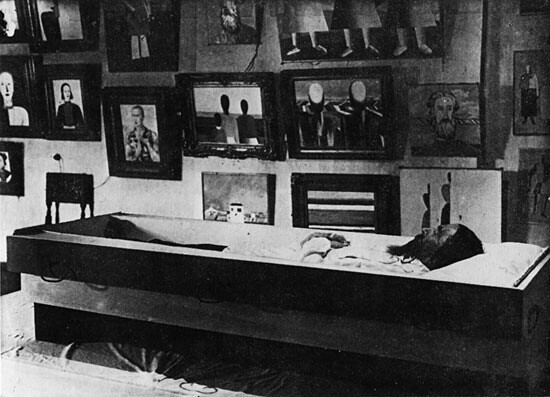

We often use the phrase “the Russian revolutionary avant-garde” to refer to Russian avant-garde artistic practices of the 1920s. But, in fact, this is incorrect. The Russian avant-garde of the 1920s was—artistically and politically—already in its post-revolutionary phase. During this phase, the Russian avant-garde further developed the artistic practices that had already emerged before the October Revolution. It operated in the framework of the post-revolutionary Soviet state—as it was formed after the October Revolution and the end of the civil war—and was supported and controlled by this state. Thus, one cannot speak of the Russian avant-garde of the Soviet period as being revolutionary in the usual sense of the word, since the Russian avant-garde art was not directed against the status quo, against the dominant political and economic power structures.
The Russian avant-garde of the Soviet period was not critical but affirmative in its attitude towards the post-revolutionary Soviet state. It was basically a conformist art. Thus, only the pre-revolutionary Russian avant-garde can be regarded today as being relevant to our contemporary situation—because the contemporary situation is obviously not the situation that existed after the Socialist revolution. So, in speaking about the revolutionary character of the Russian avant-garde, let us concentrate on the figure of Kazimir Malevich, the most radical representative of the pre-revolutionary phase of the Russian avant-garde.
As I have already mentioned, one does not find in the art of the pre-revolutionary Russian avant-garde, including the art of Malevich, the characteristics that we tend to look for when speaking about critical, politically engaged art that is able to mobilize the masses for the revolution—art that can help change the world. Thus, the suspicion arises that Malevich’s famous Black Square is unrelated to any political and social revolution—that it is an artistic gesture that ultimately has relevance only inside artistic space. However, I would argue that if Malevich’s Black Square was not an active revolutionary gesture in the sense that it criticized the political status quo or advertised a coming revolution, it was revolutionary in a much deeper sense. After all, what is revolution? It is not the process of building a new society—this is the goal of the post-revolutionary period. Rather, revolution is the radical destruction of the existing society. However, to accept this revolutionary destruction is not an easy psychological operation. We tend to resist the radical forces of destruction, we tend to be compassionate and nostalgic toward our past—and maybe even more so toward our endangered present. The Russian avant-garde—and the early European avant-garde in general—was the strongest possible medicine against any kind of compassion or nostalgia. It accepted the total destruction of all the traditions of European and Russian culture—traditions that were dear not only to the educated classes but also to the general population.
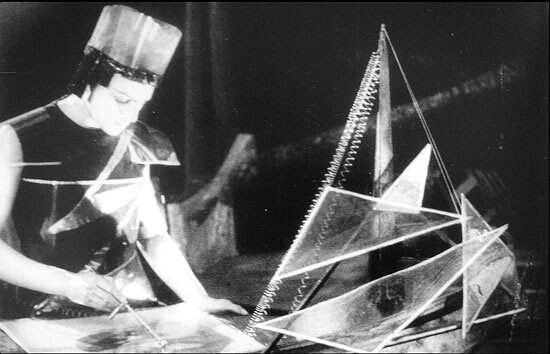

Malevich’s Black Square was the most radical gesture of this acceptance. It announced the death of any cultural nostalgia, of any sentimental attachment to the culture of the past. Black Square was like an open window through which the revolutionary spirits of radical destruction could enter the space of culture and reduce it to ashes. Indeed, a good example of Malevich’s own anti-nostalgic attitude can be found in his short but important text “On the Museum,” from 1919. At that time, the new Soviet government feared that the old Russian museums and art collections would be destroyed by civil war and the general collapse of state institutions and the economy. The Communist Party responded by trying to save these collections. In his text, Malevich protested against this pro-museum policy by calling on the state to not intervene on behalf of the old art collections, since their destruction could open the path to true, living art. He wrote:
Life knows what it is doing, and if it is striving to destroy, one must not interfere, since by hindering we are blocking the path to a new conception of life that is born within us. In burning a corpse we obtain one gram of powder: accordingly, thousands of graveyards could be accommodated on a single chemist’s shelf. We can make a concession to conservatives by offering that they burn all past epochs, since they are dead, and set up one pharmacy.
Later, Malevich gives a concrete example of what he means:
The aim [of this pharmacy] will be the same, even if people will examine the powder from Rubens and all his art—a mass of ideas will arise in people, and will be often more alive than actual representation (and take up less room).1
Thus, Malevich proposes not to keep, not to save things that have to go, but to let them go without sentimentality or remorse. To let the dead bury their dead. At first glance, this radical acceptance of the destructive work of time seems to be nihilistic. Malevich himself described his art as being based on nothingness.
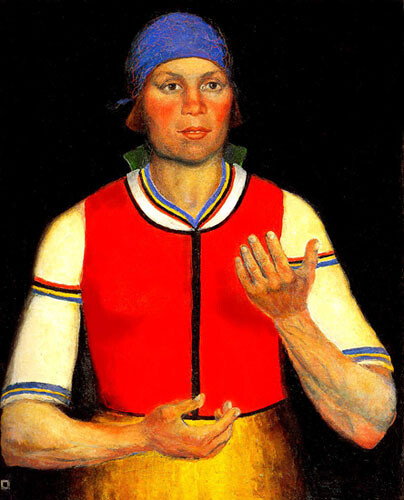

But, in fact, at the core of this unsentimental attitude toward the art of the past lies faith in the indestructible character of art. The avant-garde of the first wave allowed things—including the things of art—to fade away because it believed that something always remained. And it looked for the things that remain beyond any human attempt at conservation.
The avant-garde is often associated with the notion of progress—especially technological progress. However, the avant-garde posed the following question: How can art continue amidst the permanent destruction of cultural tradition and the known world—conditions that are characteristic of the modern age, with its technological, political, and social revolutions? Or, to put it in different terms: How does one resist the destructiveness of progress? How does one make art that can escape permanent change—art that is atemporal, transhistorical? The avant-garde did not want to create the art of the future—it wanted to create transtemporal art for all time. Again and again one hears and reads that we need change, that our goal as a society—also our goal in art—should be to change the status quo. But change is our status quo. Permanent change is our only reality. We live in the prison of permanent change. To change the status quo, we have to change the change—to escape from the prison of change. True faith in the revolution paradoxically presupposes the belief that the revolution does not have the capacity for total destruction, that something always survives even the most radical historical catastrophe. Such a belief makes possible the unreserved acceptance of the revolution that was so characteristic of the Russian avant-garde.
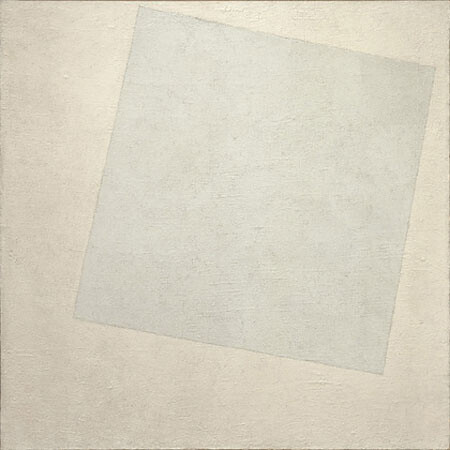

Malevich often speaks in his writings about materialism as the ultimate horizon of his thinking and art. For Malevich, materialism means the impossibility of stabilizing any image against historical change. Time and again Malevich contends that there is no isolated, secure, metaphysical or spiritual space that could serve as a repository of images immunized from the destructive forces of the material world. The fate of art cannot be different from the fate of anything else. Their common reality is disfiguration, dissolution, and disappearance in the flow of material forces and uncontrollable material processes. Malevich frames the history of new art from Cezanne, Cubism, and Futurism up to his own Suprematism as a history of the progressive disfiguration and destruction of the traditional image as it was born in Ancient Greece and developed through religious art and the Renaissance. Thus, the question arises: What can survive this work of permanent destruction?
Malevich’s answer to this question is immediately plausible: the image that survives the work of destruction is the image of destruction. Malevich undertakes the most radical reduction of the image (to a black square), thus anticipating the most radical destruction of the traditional image by material forces, by the power of time. For Malevich, any destruction of art—be it past, present, or future—is welcome because this act of destruction necessarily produces an image of destruction. Destruction cannot destroy its own image. Of course, God can destroy the world without leaving a trace because God created the world out of nothingness. But if God is dead, then an act of destruction without a visible trace, without the image of destruction, is impossible. And through the act of radical artistic reduction, this image of impending destruction can be anticipated here and now—an (anti-)messianic image, one that demonstrates that the end of time will never come, that material forces can never be halted by any divine, transcendental, metaphysical power. The death of God means that no image can be infinitely stabilized—but it also means that no image can be totally destroyed.
But what happened to the reductionist images of the early avant-garde after the victory of the October Revolution, under the conditions of the post-revolutionary state? Any post-revolutionary situation is a deeply paradoxical one—because any attempt to continue the revolutionary impulse, to remain committed and faithful to the revolutionary event, leads necessarily to the danger of betraying the revolution. The continuation of the revolution could be understood as its permanent radicalization, as its repetition—as the permanent revolution. But repetition of the revolution under the conditions of the post-revolutionary state could at the same time be easily understood as the counterrevolution—as an act of weakening and destabilizing revolutionary achievements. On the other hand, the stabilization of the post-revolutionary order could be interpreted as a betrayal of the revolution because this post-revolutionary stabilization unavoidably revives the pre-revolutionary norms of stability and order. To live in this paradox becomes, as we know, a true adventure that historically only a few revolutionary politicians have survived.
The project of the continuation of the artistic revolution is no less paradoxical. What does it mean to continue the avant-garde? To repeat the forms of avant-garde art? Such a strategy can be accused of valuing the letter of revolutionary art over its spirit, of turning a revolutionary form into a pure decoration of power, or into a commodity. On the other hand, the rejection of avant-garde artistic forms in the name of a new artistic revolution immediately leads to an artistic counterrevolution—as we saw in so-called postmodern art. The second wave of the Russian avant-garde tried to avoid this paradox by redefining the operation of reduction.
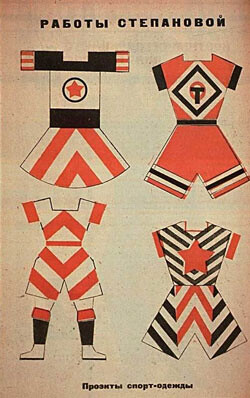

For the first wave of the avant-garde, and especially for Malevich, the operation of reduction demonstrated, as I have mentioned, the indestructibility of art. In other words, the demonstration of the indestructibility of the material world: every destruction is a material destruction and leaves traces. There is no fire without ashes—no divine fire of total annihilation. The black square remains non-transparent—because the material is non-transparent. Early avant-garde art—being radically materialistic—never believed in the possibility of a fully transparent, immaterial medium (like soul, or faith, or reason) that would allow us to see the “other world” when everything material that allegedly obscured this other world was removed by an apocalyptic event. According to the avant-garde, the only thing we will be able to see in this situation will be the apocalyptic event itself—which will look like a reductionist avant-garde artwork.
However, the second wave of the Russian avant-garde used the operation of reduction in a completely different way. For these artists, the revolutionary removal of the ancient, pre-revolutionary order was an event that opened a view onto a new, Soviet, post-revolutionary, post-apocalyptic order. It was not an image of reduction itself that was to be seen now—but a new world that could be built after the reduction of the old world was effectuated.
Thus, the operation of reduction began to be used to praise the new Soviet reality. At the beginning of their activities, the Constructivists believed that they could manage the “things themselves” that were now directly accessible after the reduction and removal of the old images that separated them from these things. In his programmatic text “Constructivism,” Alexei Gan wrote:
Not to reflect, not to represent and not to interpret reality, but to really build and express the systematic tasks of the new class, the proletariat … Especially now, when the proletarian revolution has been victorious, and its destructive, creative movement is progressing along the iron rails into culture, which is organized according to a grand plan of social production, everyone—the master of color and line, the builder of space-volume forms and the organizer of mass productions—must all become constructors in the general work of the arming and moving of the many-millioned human masses.2
But later, Nikolai Tarabukin asserted in his famous essay “From the Easel to the Machine” that the Constructivist artist could not play a formative role in the process of actual social production. His role was rather that of a propagandist who defended and praised the beauty of industrial production and opened the public’s eyes to this beauty.3 Socialist industry as a whole—without any additional artistic intervention—already showed itself as good and beautiful because it was an effect of the radical reduction of every kind of “unnecessary,” luxury form of consumption, including the consuming classes themselves. As Tarabukin wrote, Communist society was already a non-objective work of art because it did not have any goal beyond itself. In a certain sense, the Constructivists repeated here the gesture of the first Christian icon painters, who believed that after the demise of the old pagan world they could uncover the celestial things and see and depict them as they truly were.
This comparison was famously made by Malevich in his treatise “God is Not Cast Down.” This treatise was written in 1919, the same year in which Malevich wrote his essay “On the Museum,” which I discussed above. But in the case of the former text, Malevich’s polemic was directed not against the conservative lovers of the past, but against the Constructivist builders of the future. In this treatise, Malevich states that the belief in the continuous perfecting of the human condition through industrial progress is of the same order as the Christian belief in the continuous perfecting of the human soul. Both Christianity and Communism believe in the possibility of reaching ultimate perfection, be it the Kingdom of God or the Communist Utopia. In this text, Malevich begins to develop a line of argumentation that, it seems to me, perfectly describes the situation of modern and contemporary art vis-à-vis the modern revolutionary project and contemporary attempts to politicize art.
What Malevich develops is a dialectics that can be characterized as a dialectics of imperfection. As I have already said, Malevich defines both religion and modern technology (“factory,” as he calls it) as striving for perfection: perfection of the individual soul in the case of religion, and perfection of the material world in the case of factory. According to Malevich, neither project can be realized because their realization would require an investment of infinite time, energy, and effort by individual human beings and by mankind as a whole. But humans are mortal. Their time and energy are finite. And this finitude of human existence prevents humanity from achieving any kind of perfection—be it spiritual or technical. As a mortal being, man is doomed to remain forever imperfect. But why is this imperfection a dialectical imperfection? Because it is precisely this lack of time—the lack of time to achieve perfection—that opens for humanity a perspective on infinite time. Here, less than perfect means more than perfect—because if we had enough time to become perfect, then the moment of achieving perfection would be the last moment of our existence; we would no longer have any goal for which to continue to exist. Thus, it is our failure to achieve perfection that opens an infinite horizon of human and transhuman material existence. Priests and engineers, according to Malevich, are not capable of opening this horizon because they cannot abandon their pursuit of perfection—cannot relax, cannot accept imperfection and failure as their true fate. However, artists can do this. They know that their bodies, their vision, and their art are not and cannot be truly perfect and healthy. Rather, they know themselves as being infected by the bacilli of change, illness, and death, as Malevich describes in his later text on the “additional element” in painting—and it is precisely these bacilli that at the same time are bacilli of art. Artists, according to Malevich, should not immunize themselves against these bacilli. On the contrary, they should accept them, should allow them to destroy the old, traditional patterns of art. In a different form, Malevich repeats here his metaphor of the ashes: the body of the artist dies but the bacilli of art survives the death of his body—and begins infecting the bodies of other artists. That is why Malevich actually believes in the transhistorical character of art. Art is material and materialist. And this means that art can always survive the end of all purely idealist, metaphysical projects—including the Kingdom of God and Communism. The movement of material forces is non-teleological. As such, it cannot reach its telos and come to an end.
In a certain sense, these texts of Malevich remind one of the theory of violence that Walter Benjamin developed in his famous essay “The Critique of Violence” (1921). In this essay, Benjamin distinguishes between mythical violence and divine violence. Mythical violence, according to Benjamin, is the violence of change—it is the violence that destroys one social order only to substitute a new and different social order. Divine violence, by contrast, only destroys, undermines, tears down any order—beyond any possibility of a subsequent return to order. This divine violence is a materialist violence. Benjamin witnessed this himself. In his later “Theses on the Philosophy of History” (1940)—in which Benjamin tries to develop his own version of Historical Materialism—he famously evokes Klee’s image of the Angelus Novus. Carried by the winds of history, the Angelus Novus has turned his back to the future and looks only towards the past. Benjamin describes the Angelus Novus as seized by terror because all the promises of the future have been turned to ruins by the forces of history. But why is the Angelus Novus so surprised and terrorized by this? Perhaps because, before he turned his back to the future, he believed in the possibility of a future realization of all social, technical, and artistic projects.
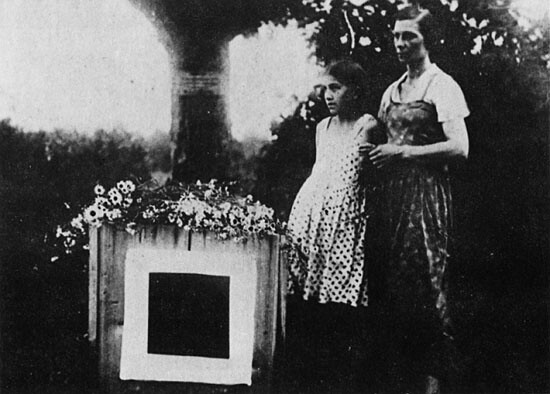

However, Malevich is not an Angelus Novus—he is not shocked by what he sees in the rearview mirror. He expects from the future only destruction—and so he is not surprised to see only ruins when this future arrives. For Malevich, there is no difference between future and past—there are ruins in every direction. Thus, he remains relaxed and self-assured, never shocked, never seized by terror or surprise. One can say that Malevich’s theory of art—as it was formulated in his polemics against the Constructivists—is precisely an answer to the divine violence described by Benjamin. The artist accepts this infinite violence and appropriates it, lets himself be infected by it. And he lets this violence infect, destroy, and sicken his own art. Malevich presents the history of art as a history of illness—of being infected by the bacilli of divine violence that infiltrate and permanently destroy all human orders. In our time, Malevich is often accused of allowing his art to be infected by the bacilli of figuration, and even, during the Soviet phase of his artistic practice, by Socialist Realism. Writings from Malevich’s time explain his ambiguous attitude towards the social, political, and artistic developments of his day: he did not invest any hope in them, any expectation of progress. (This is also characteristic of his reaction to film.) But at the same time, he accepted them as a necessary illness of time—and he was ready to become infected, imperfect, transitory. In fact, his Suprematist images are already imperfect, flowing, non-constructive—especially if we compare them to, say, Mondrian’s paintings.
Malevich shows us what it means to be a revolutionary artist. It means joining the universal material flow that destroys all temporary political and aesthetic orders. Here, the goal is not change—understood as change from an existing, “bad” order to a new, “good” order. Rather, revolutionary art abandons all goals—and enters the non-teleological, potentially infinite process which the artist cannot and does not want to bring to an end.
